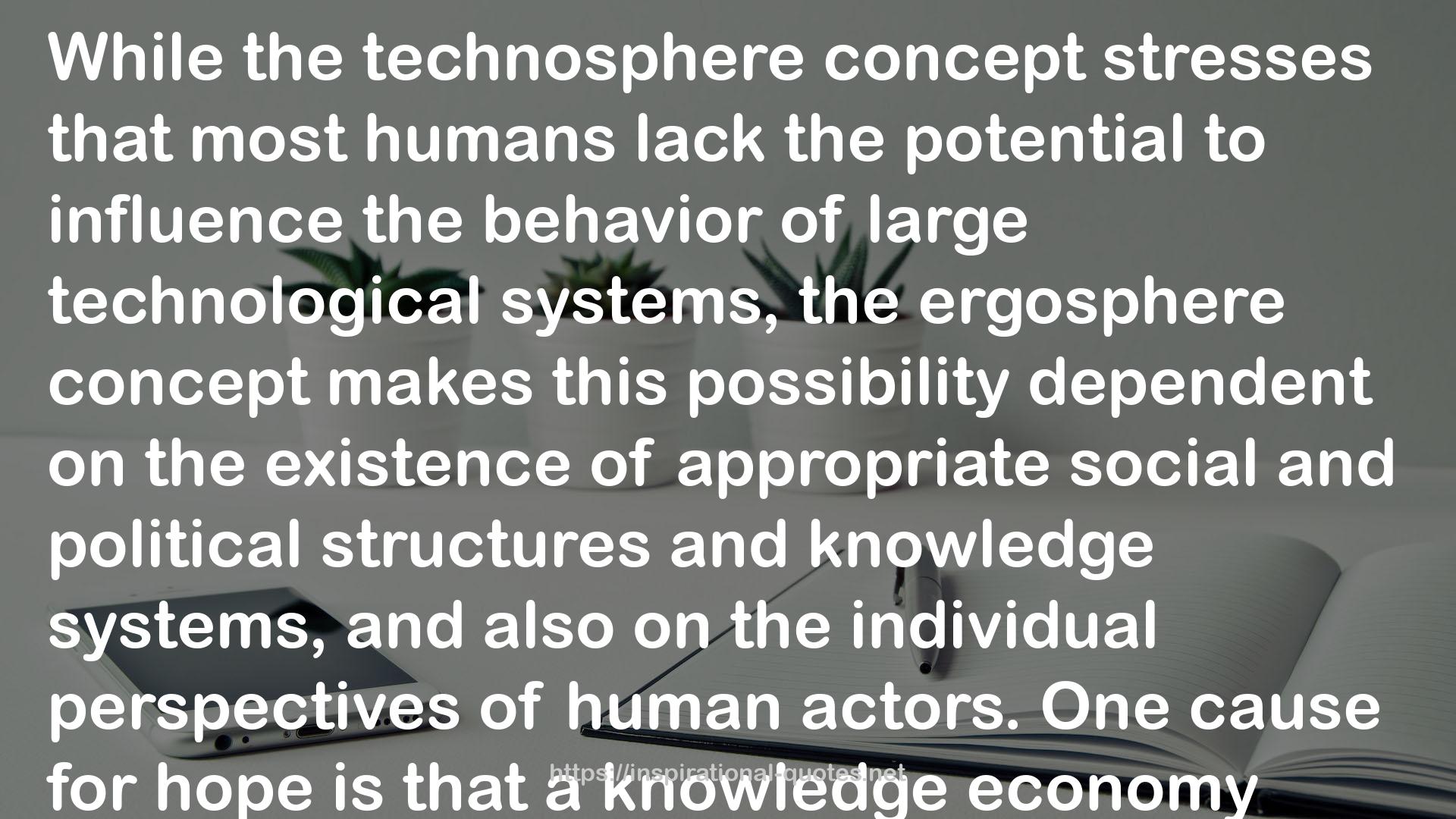" While the technosphere concept stresses that most humans lack the potential to influence the behavior of large technological systems, the ergosphere concept makes this possibility dependent on the existence of appropriate social and political structures and knowledge systems, and also on the individual perspectives of human actors. One cause for hope is that a knowledge economy produces and distributes not only the knowledge needs for its functioning (and often less) but, to varying degrees, an excess of knowledge (an 'epistemic spillover') that may trigger unexpected developments.
Humans must certainly maintain and preserve their tools, technologies, and infrastructures, but they also change them with each implementation. The material world of the ergosphere consists of borderline objects between nature and culture that may trigger innovations as well as unpredictable consequences. The ergosphere has a plasticity and porousness in which materials and functions are not so tightly interwoven as to exclude the repurposing of existing tools for new applications. In principle, each aspect of the ergosphere can be transformed from an end into a means, which is then available to emerging intentions and functions. Repurposing a given tool is, however, a double-edged sword - it may have disastrous consequences. Thus, the responsibility for using and developing technical systems must always be assumed anew. "
― , The Evolution of Knowledge: Rethinking Science for the Anthropocene
